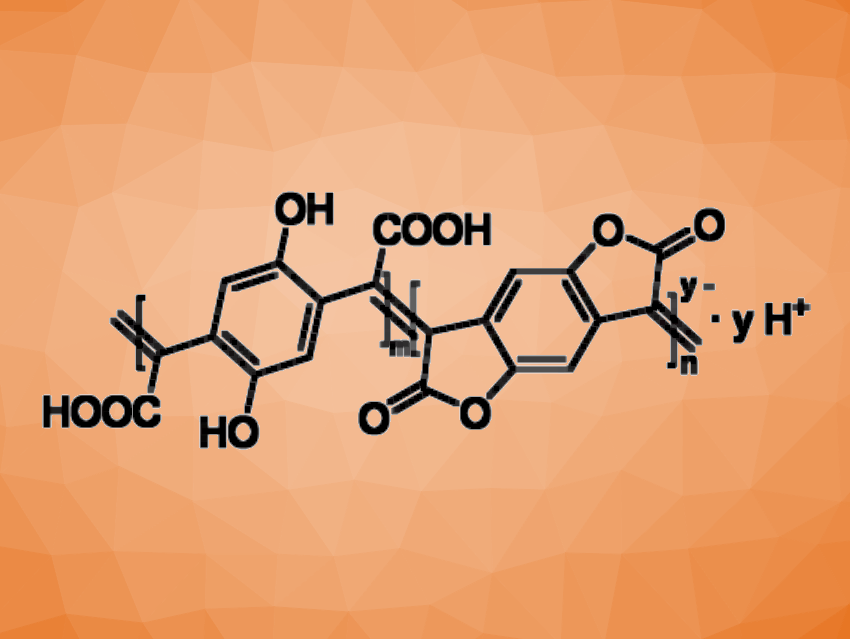Electrically conductive polymers have applications in a variety of different devices. They can have useful properties such as mechanical robustness, cost-effective solution processability, and tunable physical and chemical properties. The hole-transporting (p-type) polymer poly(3,4-ethylenedioxythiophene):poly(styrenesulfonate) (PEDOT:PSS) is a successful example, in part due to its synthesis in water, processability in aqueous solutions, and good electrical properties. Some device types require both hole-transporting (p-type) and electron-transporting (n-type) materials. However, there is a lack of n-type polymers that allow for water-based polymerization and processing.
Chi-Yuan Yang, Simone Fabiano, Linköping University and n-Ink AB, Norrköping, Sweden, and colleagues have developed a water-processable n-type conjugated polymer, i.e., poly[(2,2′-(2,5-dihydroxy-1,4-phenylene)diacetic acid)-stat-3,7-dihydrobenzo[1,2-b:4,5-b‘]difuran-2,6-dione] (PDADF, pictured) that is also highly electrically conductive. The team used the monomer 3,7-dihydrobenzo[1,2-b:4,5-b‘]difuran-2,6-dione (HBFDO) and polymerized it in water using an organic catalyst that was modified to improve its solubility in water. The catalyst, sodium 3-(2,4,5-trimethyl-3,6-dioxocyclohexa-1,4-dien-1-yl)propanoate (TMQ-PANa) can be recovered by solvent extraction after the reaction.
The researchers found that PDADF has a high electrical conductivity of up to 66 S cm–1. According to the team, this value is among the highest for n-type polymers that are both synthesized in and processed from water so far. The polymer is also air-stable, with 90 % of its conductivity being retained after 146 days under ambient conditions.
- A Highly Conductive n-Type Conjugated Polymer Synthesized in Water,
Qifan Li, Jun-Da Huang, Tiefeng Liu, Tom P. A. van der Pol, Qilun Zhang, Sang Young Jeong, Marc-Antoine Stoeckel, Han-Yan Wu, Silan Zhang, Xianjie Liu, Han Young Woo, Mats Fahlman, Chi-Yuan Yang, Simone Fabiano,
J. Am. Chem. Soc. 2024.
https://doi.org/10.1021/jacs.4c02270



